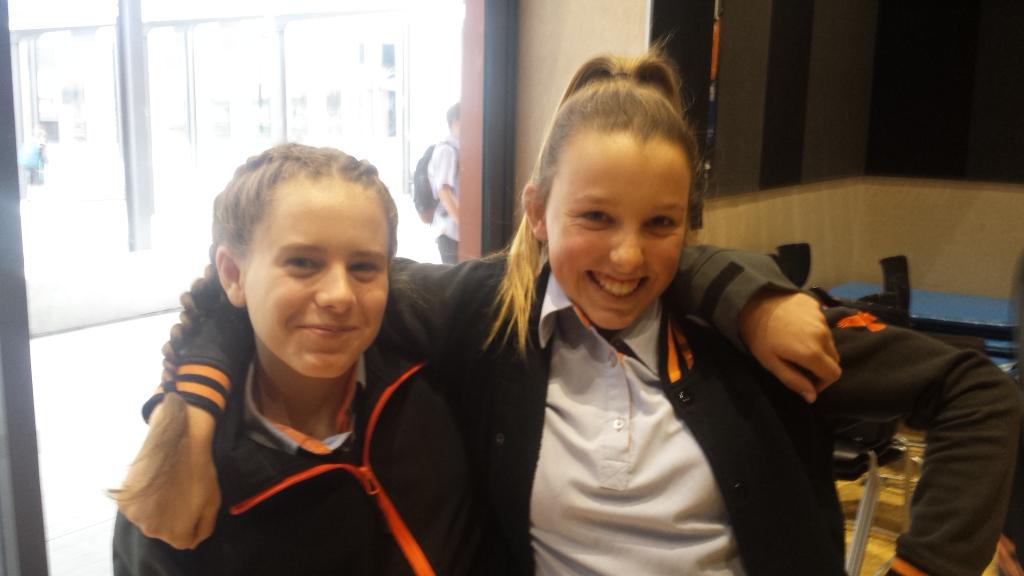Instead of getting worked up about it and saying that either: a) it's not fair, I want some cool stuff, or b) what's the point, someone else will fix it, I've decided to do something about it. And thus: MakerEdNZ was born. What is it, you ask? I'm not entirely sure. It's just an idea right now (ok, well actually, it's more than just an idea - but more on that later). But the idea is that we (the keen makers out there, those with makerspaces, and those who just want to bring them to NZ schools) can work together, share what is working for us and get those makerspaces into every New Zealand school. Ambitious? Check.
How this plays out is anyone's guess right now, but I believe that there is the desire to make this change, and that desire will increase as more and more teachers, schools and BOTs see what can happen in a makerspace and the real, authentic learning it can create.
I am currently in the process of applying to two separate programs to help me along in this journey. After being unsuccessful in my first application to the Google for Education Innovator Academy, I was speaking to an Innovator friend of mine about this very idea and it was suggested that this be the project I use in my application. And that's when things got real. When I started thinking about MakerEdNZ in those terms, I got a little more into it and have started work on a variety of angles of it (sneak peek: there's a website in the works, videos being planned, as well as twitter chats and many other ways of sharing) and have started thinking of it on a grander scale. I've literally just sent my application in for that. I'll know in a week (and so will you) whether or not I'll get the support of the amazing innovators at Google to help realize this vision of mine.
The second application I am working on (though mostly completed) is for the CORE education efellows. This will allow me to undertake some action research which will help me make the case for Makerspaces in New Zealand schools (something that would be amazingly helpful in convincing schools and BOTs to help find the space and resources for makerspaces). That application is due next week.
Whether or not I get into both or neither of these amazing programs, this initiative is going ahead full steam (But if you're reading this at Google or CORE right now, don't think that I don't want your help. I think being supported by both of you would really make this idea fly). So if you're reading this thinking "I'd love to help, but I don't know how I can" leave a message on this post, follow me on twitter (@michaelteacher, @MakerEdNZ or our hashtag #MakerEdNZ), or get ahold of me in another way. We need knowledge, skills and experience, but more importantly we need people who want to make a change and be a part of something amazing. We'll work on the knowledge, skills and experience together.
So why do this? What's the point of makerspaces. New Zealand education is fine you say. I have to disagree. Not to be disrespectful, but in my experience, way too many students have become disengaged with their education, right from the beginning. The looks on their faces when they are forced to sit still and listen is painful to me as a teacher (and yes, I know this is not the case everywhere, but it is in a lot of places). The lack of a chance for students to be creative and to make things is scary. Busy work and worksheets reign supreme in some schools and many students are left feeling like school is a prison, waiting excitedly for the end of the day and the weekends. Incidentally, as my students have been given more opportunities to make and create, the "Is it lunch yet?" questions have since been replaced with me trying to kick my students out of the classroom at playtimes. Is this not what we should all aspire to: students who actually want to be in school.
It is absolutely imperative in 2016 that we listen to the voices of our students. What do they want to learn? What skills do they want to try? We need to provide opportunities for students to learn a variety of skills (or just learn how to learn new skills) and expose them to technologies - old and new - that they wouldn't normally get exposed to. We can do better for our students. Would we want to be a student in our own classrooms?
MakerEdNZ has the practical goal of making makerspaces available to all New Zealand students, but the aspirational goal of making every student wake up in the morning and want to go to school to work on their projects.
In writing this, I've also come up with a great new slogan for MakerEdNZ:





















